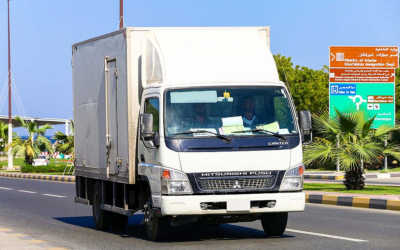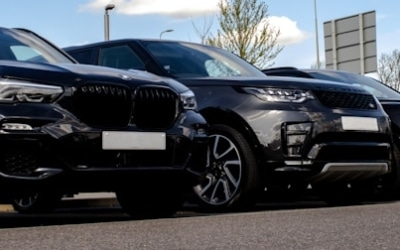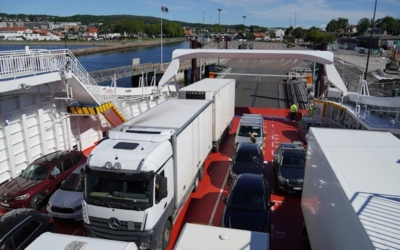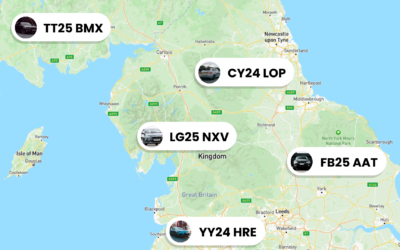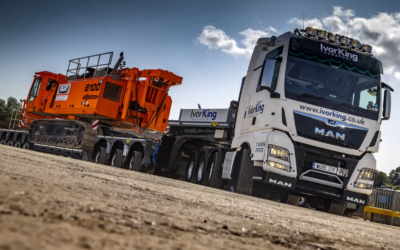Fleet Electrification Checklist for Fleet Managers
Transitioning to electric vehicles is more than a vehicle swap — it’s a strategic change to how your operation plans, maintains and measures performance. This checklist walks fleet managers through the essential steps to assess readiness, choose the right charging strategy, model total cost of ownership and run a phased rollout that reduces risk. Use it to build a practical, measurable fleet electrification programme that meets sustainability goals without disrupting operations.
Why Electrify Your Fleet — Goals and Benefits
Start by clarifying the purpose of your fleet electrification effort. Are you driven by emissions reduction and regulatory compliance, aiming to cut operating costs, or pursuing a visible sustainability commitment that strengthens your brand? For most fleets, the benefits fall into three pragmatic buckets: lower energy and maintenance costs, improved driver experience and compliance with tightening emissions rules. Framing your electrification plan around these tangible outcomes helps you secure stakeholder buy‑in and set measurable goals.
Tip: Set 2–3 primary objectives (for example: reduce fuel spend by 25% across pilot routes; achieve 10% reduction in total fleet CO2 in year one) and attach KPIs — cost per kilometre, vehicle uptime, charging utilisation — so success is measurable from day one.
Strategic objectives for electrification
Define what success looks like in financial and sustainability terms and set timelines that align with procurement cycles and regulatory deadlines.
Key benefits (cost, sustainability, compliance)
Summarise expected savings on fuel and maintenance, plus non‑financial gains such as improved brand reputation and simplified emissions reporting.
Aligning electrification with business priorities
Ensure your EV plan supports service-level commitments, driver retention and broader corporate ESG targets to avoid scope creep.
Fleet Assessment and Data Requirements
A robust fleet electrification plan begins with accurate data. You need to understand duty cycles, payloads, dwell times and current energy consumption to match vehicles to routes and charging solutions. Use telematics and historical run sheets to create route profiles — average daily kilometres, peak hours, idling and stop frequency. This data determines which assets are ideal EV candidates and which should remain internal combustion for the short term.
Collecting the right information now saves money later: vehicle utilisation rates inform replacement priority, while OBD and fuel logs reveal maintenance cost trends. If your organisation already uses telematics, link those datasets to charge‑modelling tools to forecast real-world range and energy use under load.
Route profiling and duty-cycle analysis
Map routes by distance, elevation, payload and ambient conditions to determine realistic EV range needs and charging cadence.
Vehicle suitability and replacement priority
Rank vehicles by utilisation, age and maintenance cost to create a phased replacement list that maximises near‑term impact.
Telematics and data collection needs
Ensure you capture GPS, OBD, fuel/energy consumption and utilisation metrics. See our guide on Telematics ROI for best practice on data use.
Charging Infrastructure and Energy Planning
Selecting the right charging strategy is core to any fleet electrification checklist. Choices typically fall into depot (overnight) charging, opportunity/on-route fast charging and a hybrid approach. Depot charging is usually the most cost‑effective for predictable daily mileage; fast charging is essential where rapid turnarounds are required. Assess each depot for electrical capacity, available space, and local grid constraints, and engage your distribution network operator early to understand upgrade timelines and costs.
Consider smart charging and load management systems to balance demand, reduce peak charges and coordinate charging windows. If you plan to integrate renewables or battery storage, model how solar and onsite batteries will affect charging schedules and energy costs — this can materially reduce TCO over time.
Charging strategy (depot, opportunity, public)
Match charger type and location to duty cycles: overnight depot charging for high‑utilisation vehicles, rapid chargers for long‑haul or turnaround fleets.
Site assessment and electrical upgrades
Conduct a power audit to forecast transformer, cabling and meter needs; factor in utility lead times and potential government programmes for grid support.
Smart charging, load management, and renewable integration
Use load management and scheduling to avoid costly demand charges. Plan for V2G/V2H readiness if future use is likely.
Financial Analysis, Incentives, and Total Cost of Ownership
One of the first questions you’ll face is “what will this cost?” The answer lies in a disciplined total cost of ownership (TCO) model that includes vehicle acquisition, energy, maintenance, infrastructure, residual value and operational change costs. Compare scenarios over a realistic lifecycle (5–10 years) and stress‑test assumptions for energy price volatility and battery degradation.
Don’t overlook grants and incentives — these can materially change the business case. Search national and local programmes, and talk to utilities about demand‑response or EV tariff options. When evaluating options, include insurance impacts and resale risk. For a deeper dive on modelling TCO and charger economics, see our Fleet Electrification: TCO & Charging Guide for Directors.
TCO model and key cost drivers
Build a spreadsheet that aggregates CAPEX, OPEX, infrastructure and end‑of‑life value. Highlight sensitivity to energy price and utilisation rates.
Grants, incentives, and financing options
Identify government schemes, utility rebates and leasing or finance structures that lower upfront cost and improve cashflow.
Risk, residual value, and insurance considerations
Factor in battery life uncertainty, warranty coverage and how insurers treat EV fleets when pricing policies.
Ready to see how this works in practice? Book a free Book demo with Traknova to map your depot requirements, simulate charging schedules and understand TCO for your routes. A short demo will show live data use-cases and how telematics, smart charging and analytics come together to simplify your fleet electrification rollout.
Implementation Roadmap and Operational Changes
Turn plans into action with a phased implementation roadmap. Start with a pilot that includes a small number of vehicles and one or two representative routes; use it to validate range, charging behaviour and operational impacts. Define clear KPIs such as cost per kilometre, service completion rate and charging uptime. Run the pilot long enough to capture seasonal effects and atypical demand patterns.
Operational changes are inevitable: technicians need EV‑specific training, spare parts strategies change and safety protocols must be updated. Ensure procurement processes allow for performance guarantees and align vendor SLAs to business KPIs. Set up continuous monitoring — integrate vehicle telematics, charger telemetry and maintenance systems to measure outcomes and iterate quickly.
Pilot program design and success metrics
Design a pilot that mirrors high‑risk routes and capture metrics on range, charging time, driver feedback and maintenance events.
Training, maintenance, and spare parts planning
Plan for technician upskilling, revised safety training and a reconfigured spare parts inventory that includes battery and electrical components.
Procurement, vendor selection, and ongoing monitoring
Create procurement criteria that include warranty, data access, interoperability and long‑term support; maintain dashboards to track KPIs.
Conclusion and Next Steps
Electrifying your fleet is a multi‑dimensional project that touches operations, finance and sustainability. Use this checklist to structure your programme: set clear objectives, collect the right data, choose an appropriate charging strategy, model TCO carefully and run a phased rollout with measurable KPIs. With the right approach you’ll reduce total costs, lower emissions and position your fleet for future regulatory requirements.
When you’re ready to move from planning to action, Traknova can help. Book demo to explore tailored electrification models, depot assessments and real‑time telematics integration that make the transition practical and predictable.
Frequently Asked Questions
How do I decide which vehicles to electrify first?
Prioritise vehicles with predictable, short daily ranges, high utilisation and high fuel or maintenance costs. Use telematics to identify ideal candidates and run a small pilot before large-scale replacement.
What are typical charging costs for a depot rollout?
Costs depend on local energy tariffs and demand charges. Include charger hardware, installation and any grid upgrades in your model. Smart charging and time-of-use tariffs can significantly reduce operational energy costs.
How long do EV batteries last in fleet service?
Battery life varies by chemistry, duty cycle and thermal management, but many manufacturers offer warranties for 8 years or a specified kilometre threshold. Factor degradation into your TCO model.
Can I integrate renewables with depot charging?
Yes — solar, battery storage and smart controllers can reduce peak demand and energy costs. Model the interaction carefully to ensure ROI and system reliability.
Where can I get more detailed modelling templates?
Download our guides and tools by contacting our team or Book demo for a personalised session where we walk through your data and build a tailored model.
We’d love your feedback. Did this fleet electrification checklist answer your top questions? Please share this article with colleagues and on your network — social shares help other fleet managers find practical advice. What’s your biggest concern about electrification right now: range, infrastructure cost, or operational disruption? Reply with your thoughts or Contact us for a direct conversation.
Want to see how Traknova can help you plan, pilot and scale an EV fleet? Book demo to get a personalised consultation on depot assessment, charging strategy and TCO modelling.




